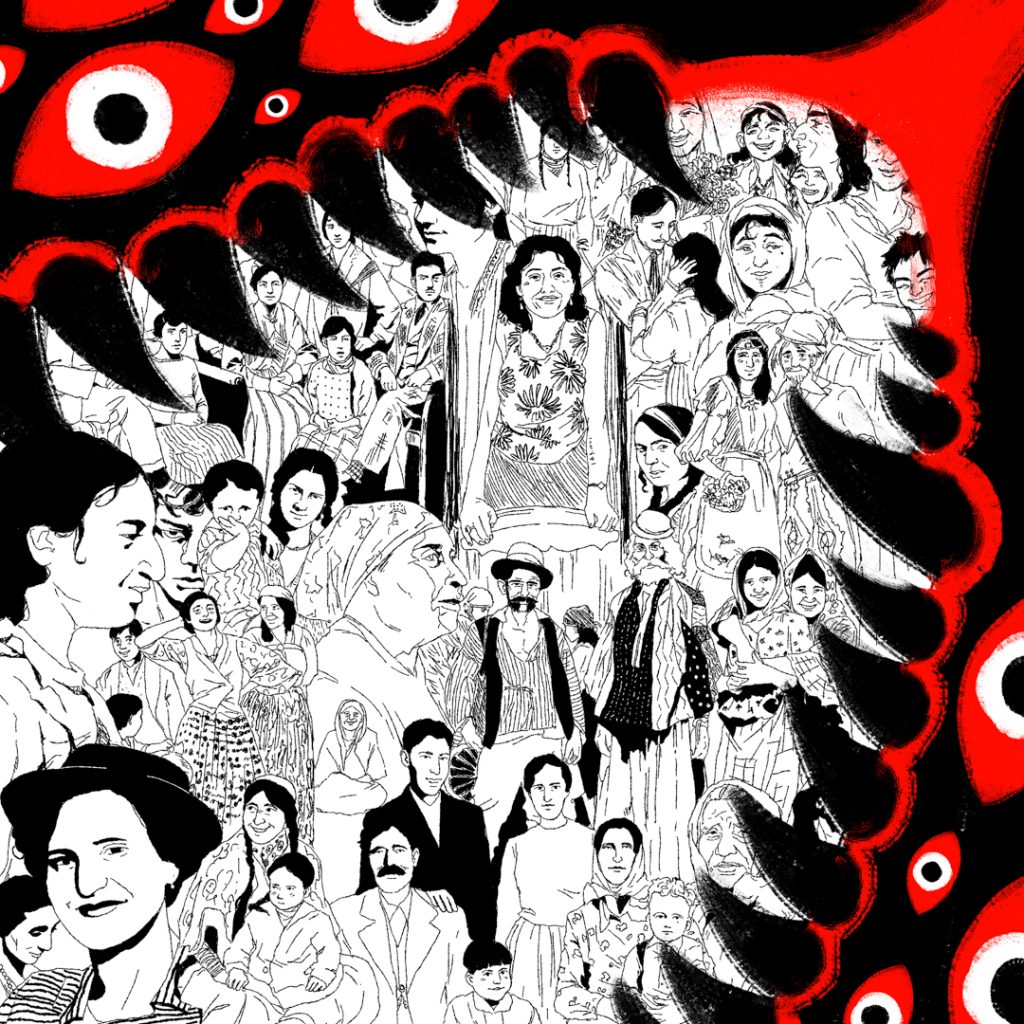Today is the International Day of Commemoration in Memory of the Victims of the Holocaust. CHASI artist Sharon Strauss took the time to create these two powerful pieces in commemoration.
Porajmos: “The Devouring”

A Romani word coined by Ian Hancock in 1990, “The Devouring” encapsulates the deliberate and often forgotten genocide of the Romani people under the Nazi Regime. The true number is lost to history, but it is approximated that somewhere between 200,000 and 500,000 Romani people were killed via execution or forced labour. On July 14th of 1933, they were legally designated as Lebensunwertesleben—life unworthy of living—a categorization that led to mass sterilization and persecution. It has been nearly a century since then, and discrimination against the many and varied Romani cultures remains a prevalent issue. The Romani people persevere all the same, but we do them a continued injustice so long as we allow prejudice to flourish. It’s high time we consign that hate to history.
“Never again.”

There are few things so nakedly evil as genocide. The Holocaust was one of many, distinct in its scale and brutal precision. A total of 6 million Jewish people were murdered, with how many more uncounted outside the death camps and massacres. The Shoah, “The Calamity”, could not have grown to be the monster it was without the foundations of prejudice and xenophobia. The pictures speak plainly, taken so that we should all forever bear witness to the cruelty and clinical barbarity that apathy permits. That duty to testify is no less urgent today.
More than a prayer, more than a promise, it is a call to action.

